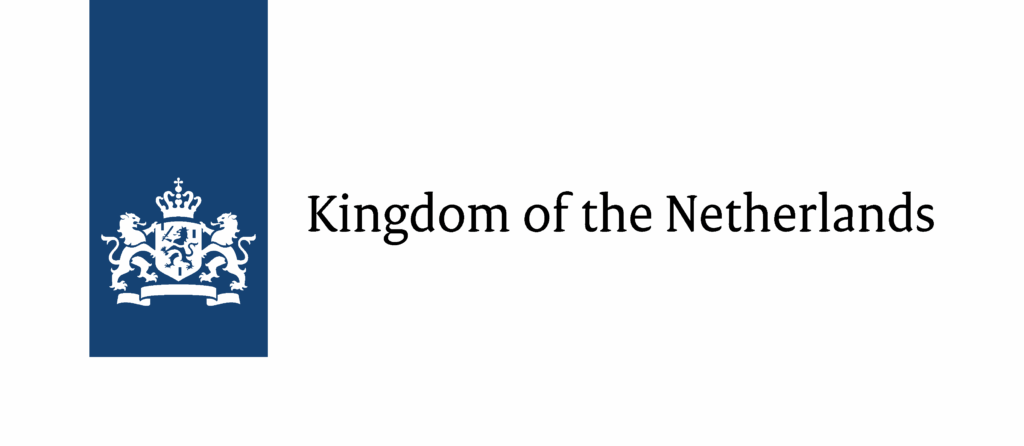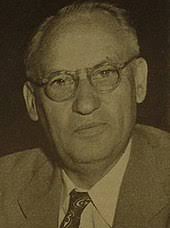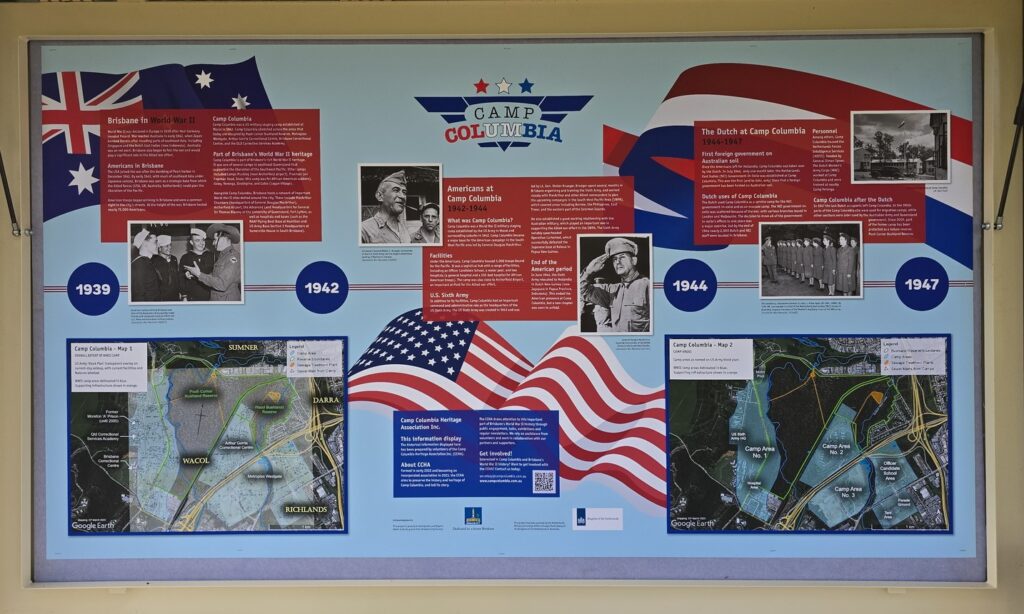
A new, high-quality heritage display has been installed at the entrance to Pooh Corner Bushland Reserve, part of the former Camp Columbia site, in the south-west Brisbane suburb of Wacol. This location marks one of the last visible remnants of Camp Columbia.
The new cabinet has been mounted on the reverse side of the existing noticeboard just inside the Reserve. While the front of the board continues to provide information on biodiversity and walking tracks, the new rear display introduces visitors to the history of Camp Columbia during World War II and its later uses.
The project aims to enhance public awareness of the area’s rich wartime and postwar heritage. It was made possible with the support of the Brisbane City Council’s Lord Mayor’s Better Suburbs Grants program—which funded the display cabinet—and the Netherlands Ministry of Foreign Affairs through the Embassy of Kingdom of the Netherlands in Australia—which supported the design and printing of the interpretive panels.
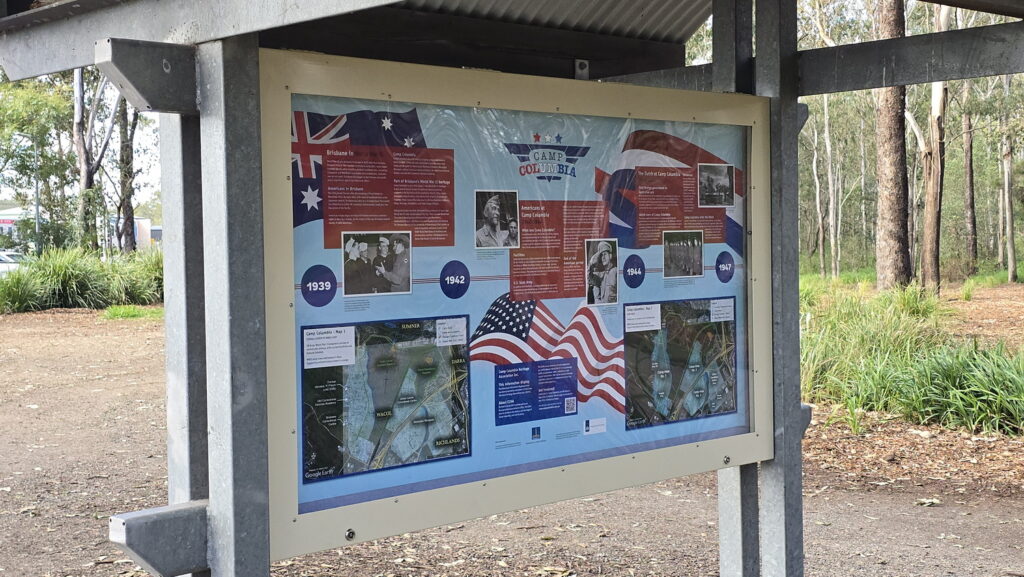
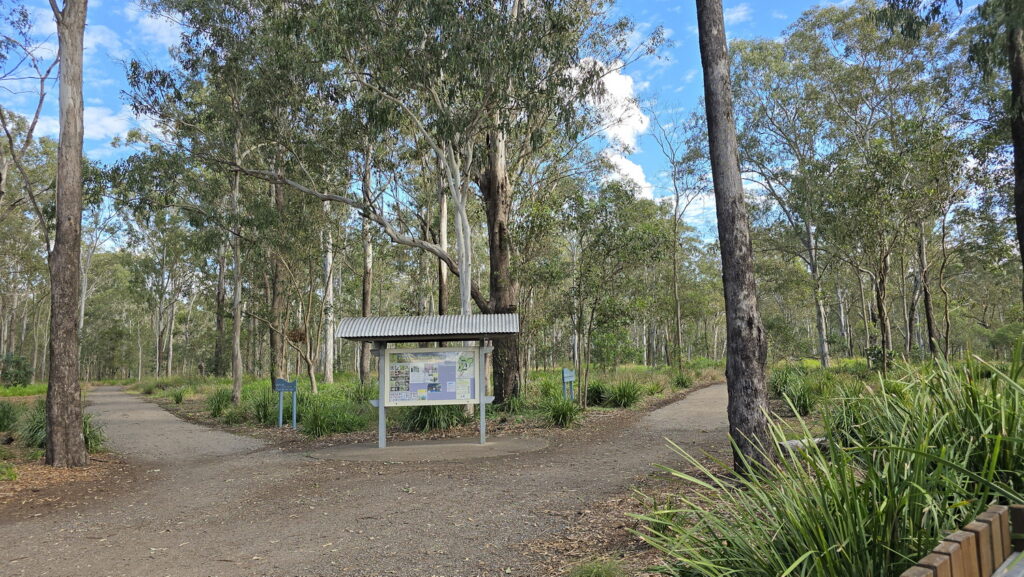
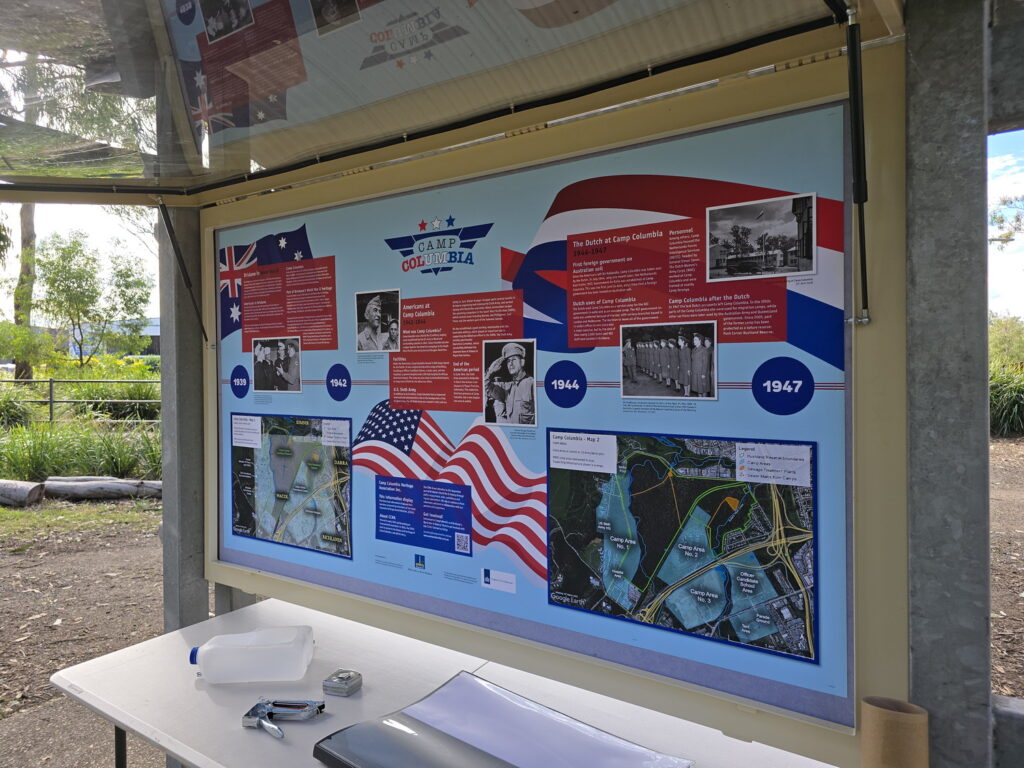
Below are photos of the team members involved in installing the display on-site. Not pictured but also acknowledged is the valuable work of the research team, who developed the historical content featured in the display.
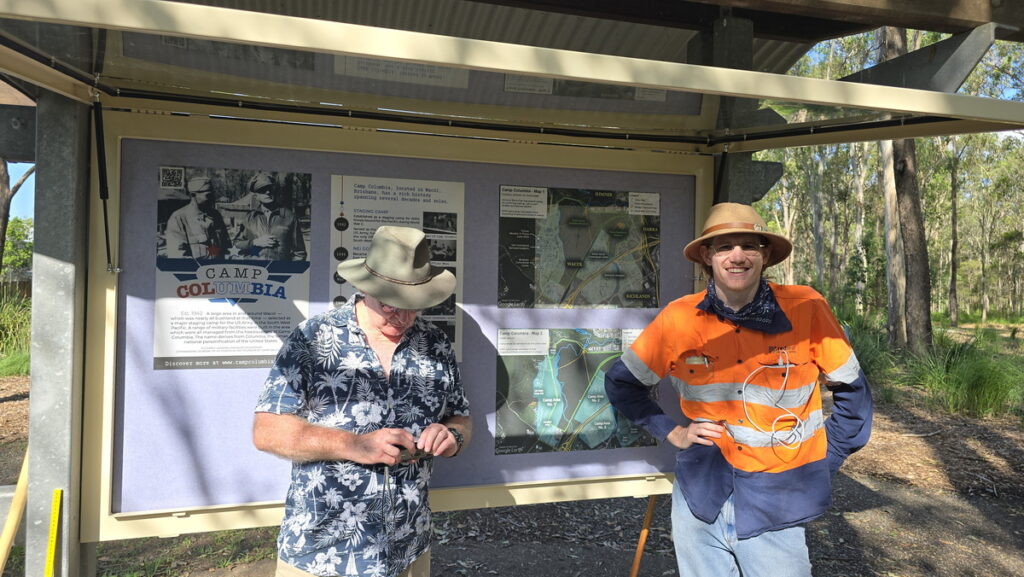
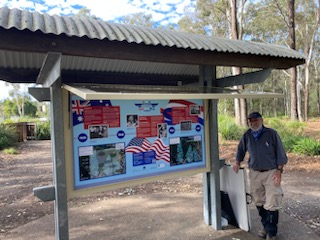
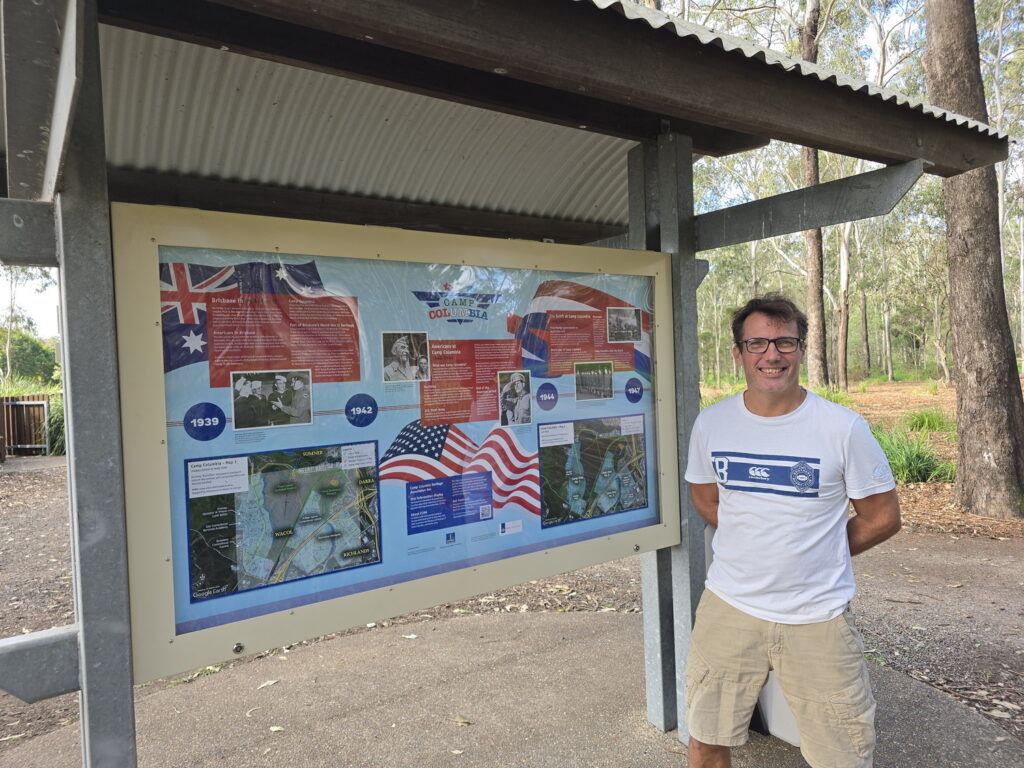
For information on the history of Camp Columbia, click here.
This project is proudly funded by the Lord Mayor’s Better Suburbs grants from Brisbane City Council.

This project has been assisted by the Dutch Ministry of Foreign Affairs through the Embassy of Kingdom of the Netherlands in Australia.
